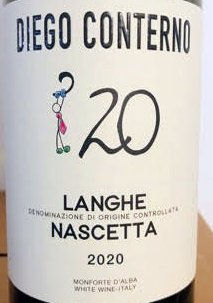 Diego Conterno Nascetta – Organic
Diego Conterno Nascetta – Organic
A rising star in the southern reaches of the Barolo zone, Diego Conterno and his son, Stefano, craft elegant wines in Monforte d’Alba, Baroli that are supple and utterly profound in their perfumes and flavors. They tend five acres in the heart of ‘Ginestra’ (plus another 15 acres in Monforte, including a rare plot of Nascetta vines) organically.
Trained by Piedmont legend Beppe Colla years ago at Prunotto, Diego with his cousins helped establish Conterno-Fantino in 1982. After nearly two decades of crafting bold wines at this modern Barolo estate, Diego felt it was time for him to explore a more natural expression of Nebbiolo.
He left the family project to start his own in 2000, bringing with him from his family’s holdings a nearly five-acre plot in ‘Ginestra,’ unquestionably Monforte’s top cru. In 2010, his son Stefano joined the estate, adding a new energy and focus to its already growing reputation for quality in Monforte.
Crucially, Diego Conterno wines “blend the energy and brawn of Monforte with the translucence of traditionally inspired winemaking,” says Antonio Galloni. Rich and potent yet utterly suave in perfume and flavor, wines across the board are made naturally, fermented on indigenous yeasts in neutral cement tanks and aged in traditional large oak cask (botti). All vines are cared for organically.
The estate tends some 20 acres of vineyard land organically in the village of Monforte d’Alba, located along the southern edge of the Barolo zone. The Conternos began farming organically in 2010, and achieved certification in 2014.
The family’s historical holdings include vines in the ‘Sori’ or full south-facing portion of ‘Ginestra,’ some five-acres worth and planted in 1982. Other holdings include vines in ‘San Pietro,’ ‘Pajana’ (part of Ginestra) and ‘Gris,’ all in Monforte.
The estate’s Nebbiolo vines (for its Nebbiolo d’Alba bottling) as well as its Barbera, Dolcetto and Nascetta vines, are planted in ‘Ferrione,’ which faces west and is situated just below the family winery, which was renovated in 2014.
Harvest is performed by hand. In the cellar, grapes are destemmed and fermented on indigenous yeasts in temperature-controlled, stainless steel tanks. Barolo wines are aged in traditional oak cask (botti), then further aged in neutral cement tanks before bottling, with very little added sulfur.
Piedmont’s true native, white grape may be Nascetta (say nass-CHET-ta), a rare gem that is slowly making a comeback in the Langhe region after being forgotten for too many years. Historically, Nascetta was made into a sweet wine (mostly for religious services) yet as a dry wine, its complexity and aromatic intensity are immediately captivating. Citrus and pineapple, savory notes of sage and rosemary.

